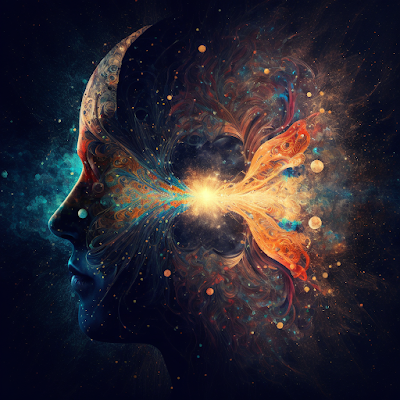The force behind Cosmic Acceleration: The truth about Dark Energy
Introduction
The universe
is expanding, and scientists have known this for over a century. However, it
was not until the late 1990s that astronomers discovered that the expansion of
the universe is actually accelerating. This acceleration is thought to be
driven by a mysterious force known as dark energy. In this blog post, we will
explore the nature of dark energy, the leading theories to explain it, and the
ongoing efforts to understand this enigmatic force.
What is Dark Energy?
Dark energy
is a term used to describe the mysterious force that is thought to be
responsible for the accelerated expansion of the universe. Despite its name,
dark energy is not a form of matter or radiation, but rather a property of
empty space itself. This means that it is present everywhere, even in the
vacuum of space.
Theories to Explain Dark Energy
Two leading
theories attempt to explain the nature of dark energy. The first theory is the
cosmological constant, which was first proposed by Albert Einstein in 1917. According
to this theory, dark energy is a property of empty space, known as the vacuum
energy, that acts as a sort of "antigravity" force, pushing the
universe apart.
The second
theory is the theory of quintessence, which proposes that dark energy is a form
of "quintessence" field that permeates the universe. This field would
have a negative pressure, which would drive the accelerated expansion of the
universe.
Studying Dark Energy
The nature
of dark energy is still a topic of ongoing research, and scientists are using a
variety of methods to study it. One way is through precision measurements of
the cosmic microwave background radiation, which is the afterglow of the Big
Bang. By measuring the temperature and polarization of this radiation,
scientists can infer the properties of the universe, including the density and
composition of dark energy.
Another way
to study dark energy is through the use of large galaxy surveys, such as the
Baryon Oscillation Spectroscopic Survey (BOSS) and the Dark Energy Survey
(DES). These surveys map the distribution of galaxies in the universe and can
be used to infer the properties of dark energy.
Conclusion
Despite
ongoing research, the nature of dark energy remains one of the biggest unsolved
mysteries in physics. Many scientists believe that a deeper understanding of
this mysterious force will require new theories and experimental techniques
that go beyond our current understanding of physics. Nonetheless, by studying
the cosmic microwave background radiation and using large galaxy surveys,
scientists are working to unlock the secrets of dark energy, a force that is
thought to make up around 68% of the total energy density of the universe.














Comments
Post a Comment